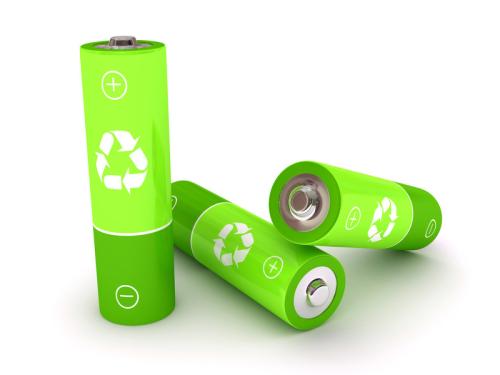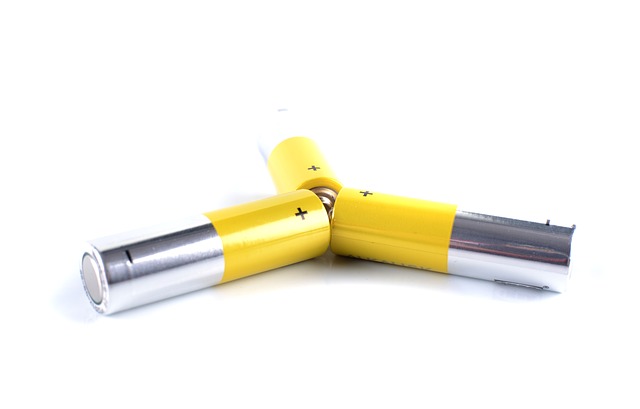Soldering 18650 Batteries-Methods and Safety
Jan 02, 2020 Pageview:9206
A 18650 is a lithium-ion rechargeable battery and properly named as “18650 cell”. The cell has a nominal voltage of 3.7 volts. The 18650 batteries are commonly found in consumer applications, for instance, flashlights, high-drain devices, laptops and a lot more. These batteries come in flat as well as button top styles and generally, boast 300 to 500 charge cycles.
In short, it is no wonder to witness that 18650 batteries have gained huge popularity in the battery world. Many are using them over other battery technologies. Today, we are going to talk about soldering 18650 batteries - is it possible to solder 18650 batteries and if so, then how to get the job done with utmost safety and precautions.
So, let’s begin with a simple question….
Can you solder 18650 batteries?
The simple answer to the question is YES.
However, soldering a lithium-ion is an extremely big problem or challenging task even for the experienced technicians out there. There are many techs who attempt to solder lithium-ion cells or mobile phone batteries. It is not highly recommended by the battery manufacturers for heating them up in spite of the reason.
By using heat on lithium-ion cells, you can severely damage the pressure protections, the plastic separator or even the primary internal lithium layers. Even though there are some ways out there to solder 18650 batteries with no heat, those methods require very special equipment that generally people like you don’t have.
The good news is that there is even a way to solder 18650 batteries without the use of special tools. But, the first thing is first - you shouldn’t solder 18650 batteries unless you have a solid reason to do so. Most importantly, you should do this job only if you have some kind of soldering experience.
If you do have some experience with soldering batteries and have a little bit knowledge of physics too, then continue reading the post.
But, did you know really the importance of soldering? Well, soldering is done to form a reliable and permanent connection between electronic components. The metal that needs to be soldered is heating with a soldering iron and solder then is melted into the connection. In short, solder is nothing, but metallic “glue” holding the parts together and builds a connection that lets electric current flow.
When it comes to do-it-yourself 18650 battery pack, the soldering role comes in.
How do you connect 18650 batteries?
If you are curious to know about connecting 18650 batteries, then it means that you would like to make a 18650 battery pack. The process incorporates the soldering.
Let’s learn the entire process…
Step 1: Measuring the voltage of each module
The first step is to measure the voltage of each module and all should be within a couple of hundredths of a voltage.
Step 2: Laying
For 6p straight modules, the count of different layouts possibility is fairly limited. The two main layouts are - offset packing or straight packing. No matter which packing you consider, make sure to put every other module upside down within the pack so that you solder the modules with ease in series. Now, you can glue the cell modules using hot glue.
Step 3: Labeling
You should label the cell modules, for instance, +1, +2, -1, etc.
Step 4: Tinning
Now, you are almost ready, to begin with soldering your modules together. In order to do the soldering, you have to tin the cell modules. And tinning is a technique to heat something and apply solder to it. On your cell modules, you need to form a connection between every individual cell and that’s why you need to tin your modules on the nickel strip between the battery cells.
Turn the pack over to the side where the +1 module and -2 module terminals next to each other. Here’s the process - begin by applying heat from an adjustable, good temperature soldering iron to the point between the battery cells for a second, and solder then apply directly to the point between the nickel strip and soldering iron.
Step 5: Cut your nickel strip
Cut your nickel strip roll into short sections of 2 cm long using a pair of scissors.
Step 6: Soldering your nickel strips
In this process, you need chopstick, popsicle stick, toothpick or other items of wood.
Hold chopstick in your mouth
Put nickel onto a cell module so that overlapping with solder blobs you have already tinned takes place.
Hold solder in one hand and soldering iron in the other.
Put the tip of your soldering iron on the edge of your nickel strip in order to heat it while you touch the solder to nickel strip and iron.
It’s time for merging the pre-tinned solder blob on the cell module into the new one you applied just to nickel stip.
At the same time of merging, you should drop solder and then, pick up the chopstick
Using a chopstick, hold the nickel strip and then, remove the soldering iron.
After soldering, all that left to do is to add a battery management system (BMS) and sealing the battery. That’s how you can connect 18650 batteries to form a battery pack at home.
What safety tips do you need to pay attention to?
While connecting and soldering 18650 batteries, there are certain precautions and things you should keep in mind and follow for your own safety-
As there is a risk of chemical release, fire, and explosion, it is highly recommended to use eye protection, gloves, and a face shield.
Before soldering, make sure that the terminals are clean and completely free from any debris and dust particles. Use electrical contact cleaner or isopropyl alcohol to remove the oils and dust accumulated by manufacturing or fingers.
Make sure to do the soldering job in a very well ventilated area. You should open a room window and utilize a fan to blow the air away from your workstation and face. Ensure that air is not blowing nickel strips that could lead to dangerous short if they end up in the wrong place.
While working with batteries is always dangerous. That’s why you should perform such tasks like connecting batteries, soldering batteries or alike only if you have some experience. And make sure to follow the safety tips, which could ensure the smooth process.
Leave Message
Hottest Categories
-
Hottest Industry News
-
Latest Industry News












